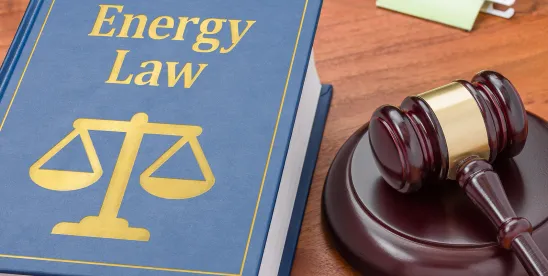California has set ambitious clean energy standards, mandating that 100% of the state's electricity be supplied by renewable and zero-carbon resources by 2045, with interim targets of 60% by 2030 and 90% by 2035. In order to meet these goals, California must be able to successfully store solar and wind energy generated only when the sun is shining, and the wind is blowing. In 2024, California made significant progress, bringing more than 7,000 megawatts of clean energy and over 4,000 megawatts of new battery storage online. Battery storage systems are key to California’s ability to meet energy demand, but the current installed battery storage capacity is over 20% of California’s peak demand. The state’s projected need for battery storage capacity is estimated at 52,000 megawatts by 2045.
To help achieve this ambitious target, since 2022, the California Energy Commission (CEC) was given temporary authority to permit certain renewable energy projects, including energy storage facilities capable of storing 200 megawatt-hours or more, through its Opt-In Certification Program originally enabled under AB 205. The Opt-In Certification Program is an optional permitting process through which project developers receive a permit from the CEC in lieu of any local permit and most, but not all, state permits. Since the enactment of the program, Allen Matkins has developed significant experience supporting Opt-In projects. As of this publication, there are eight Opt-In projects in the CEC’s queue.
The January 2025 fire that destroyed a portion of the 300-megawatt Moss Landing energy storage facility near Santa Cruz, California has brought increased attention to safety standards at storage facilities. This legislative session, three bills, AB 303, AB 434, and SB 283 were introduced, each proposing different standards for energy storage safety.
AB 303: BATTERY ENERGY SAFETY & ACCOUNTABILITY ACT
AB 303, introduced by Assemblymember Dawn Addis, proposes to remove energy storage facilities from the CEC’s Opt-In Certification Program and return land use authority back to local agencies. Additionally, AB 303 would establish restrictions for locations of new energy storage facilities. If passed, new facilities could not be constructed in high fire and high flood zones and a 3,200-foot setback from environmentally sensitive sites, such as homes, schools, hospitals, and prime agricultural land would be required. As drafted, AB 303 would not impact existing energy storage facilities but would seek to address safety concerns for new facilities across the state. At the beginning of June, AB 303 became a two-year bill by not passing through to the Senate by the applicable deadline.
AB 434
AB 434, introduced February 5th by Assemblymember Carl DeMaio, would similarly exclude energy storage facilities from the CEC’s Opt-In Certification Program. However, AB 434 would further prohibit, until January 1, 2028, a public agency from authorizing the construction of new energy storage facilities and would require the State Fire Marshal, on or before January 1, 2028, to adopt guidelines and minimum standards for the construction of energy storage facilities. Further, AB 434 would require public agencies authoring new energy storage facilities on or after January 1, 2028, to require the facility to meet either the standards adopted by the State Fire Marshal or more stringent guidelines as determined appropriate by the public agency. At the beginning of June, AB 343 became a two-year bill by not passing through to the Senate by the applicable deadline.
SB 283
SB 283, introduced February 5th by Senator John Laird, would require new energy storage facilities to meet the National Fire Protection Association (NFPA) 855 standards for battery storage safety and hazard mitigation. Further, prior to submitting an application for a new energy storage facility through either the CEC’s Opt-In Certification Program or a local approval process, developers would be required to engage and confer with local fire authorities to address facility design, assess potential risks, and integrate emergency response plans. As of this writing, SB 283 is being considered in the Assembly and will be heard before the Energy, Utilities and Communications and Local Government committees.




 />i
/>i
